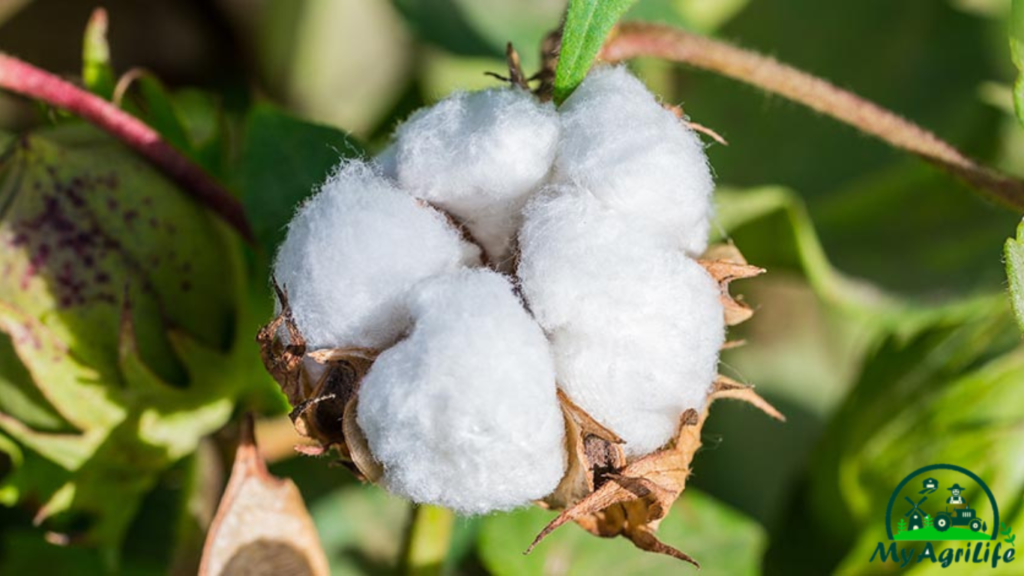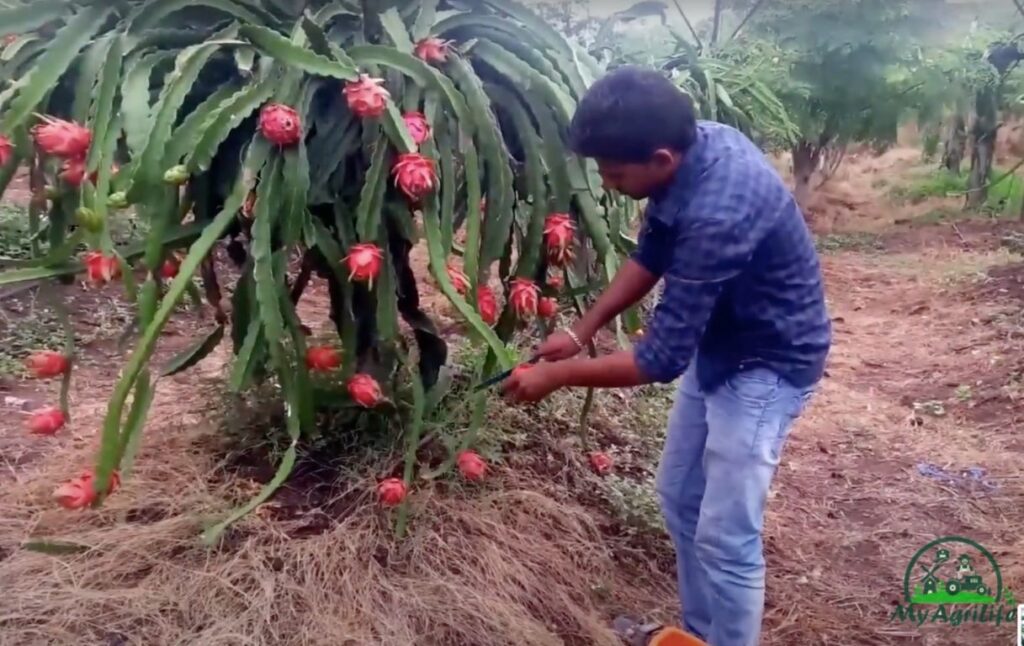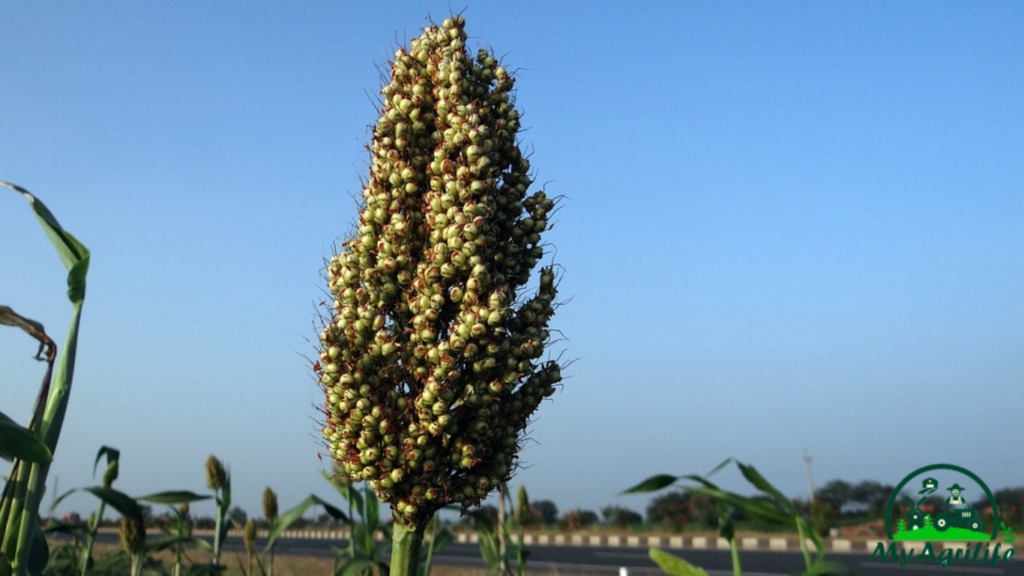
Sorghum, also known as Jowar in Hindi, is a cereal grain crop that is widely grown in Africa, Asia, and some parts of the Americas. It is a staple food crop in many regions and is used for making a variety of food products, such as flour, porridge, and flatbreads.
Sorghum is a highly versatile crop that is drought-resistant and can grow in a wide range of soil types, from sandy to clayey soils. It is a warm-season crop that requires temperatures of at least 25°C to grow and is typically grown in the summer months.
Sorghum is a rich source of nutrients, including fiber, protein, and minerals such as iron, phosphorus, and potassium. It is also gluten-free, making it a popular alternative to wheat and other gluten-containing grains for people with celiac disease or gluten sensitivity.
Apart from its use as a food crop, sorghum is also used as animal feed, for making biofuels, and for various industrial purposes such as in the production of adhesives, paper, and textiles.
Overall, sorghum is an important crop that provides food security to millions of people around the world and has many potential uses in various industries.
Seed Specification Sorghum
The seed specifications for sorghum can vary depending on the specific variety being grown and the intended use of the crop. However, here are some general seed specifications for sorghum:

1.Seed size: Sorghum seeds are typically small and range in size from 2-5 mm in diameter.
2.Seed color: Sorghum seeds can range in color from white to red, brown, or black, depending on the variety.
3.Germination rate: A good quality sorghum seed should have a germination rate of at least 80% or higher.
4.Purity: The seed should be free from weed seeds, other crop seeds, and other contaminants.
5.Moisture content: The seed should have a moisture content of around 10-12% to ensure good seed storage and longevity.
Seed treatment: Sorghum seeds are often treated with fungicides or insecticides to protect against diseases and pests.
6.Vigor: The seed should have good vigor, meaning it should be able to grow quickly and strongly after planting.
7.Genetic purity: Sorghum seeds should be genetically pure and free from any cross-contamination with other varieties or genetic materials.
It is important to purchase sorghum seeds from a reputable seed supplier and to carefully read and follow the instructions for planting and care of the crop.
Land Preparation & Soil Health Sorghum
Land Preparation for Sorghum:
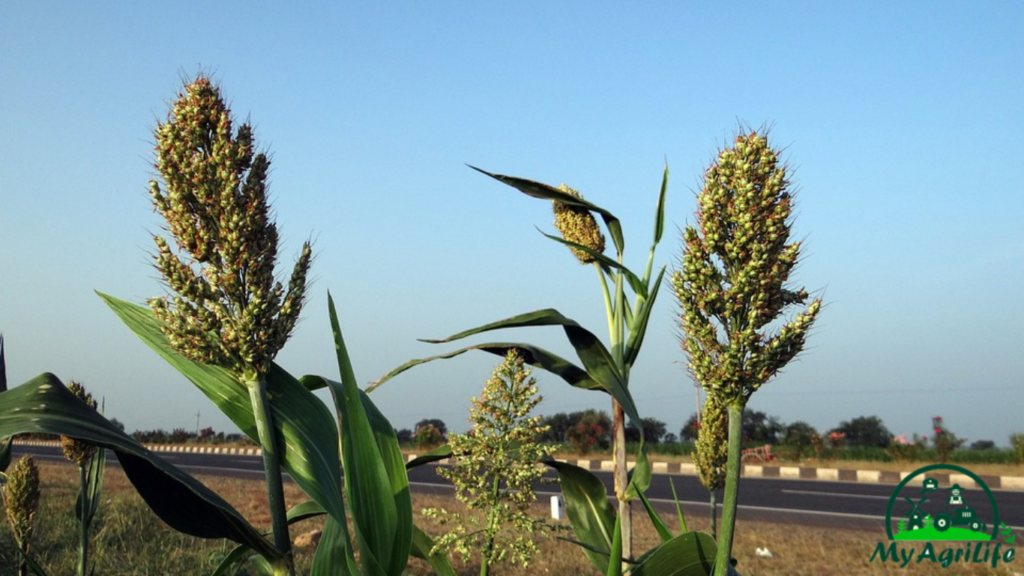
1.Clear the land of any existing vegetation or debris to make way for the sorghum crop.
2.Prepare the soil by plowing or tilling to a depth of 15-20 cm to break up any hard soil clods and create a loose, friable seedbed.
3.Level the soil surface to ensure uniform planting and good water distribution.
4.Apply any necessary fertilizers or soil amendments based on soil test results to ensure optimal nutrient levels for the crop.
5.Plant the sorghum seeds according to recommended planting rates and depths.
Soil Health for Sorghum:
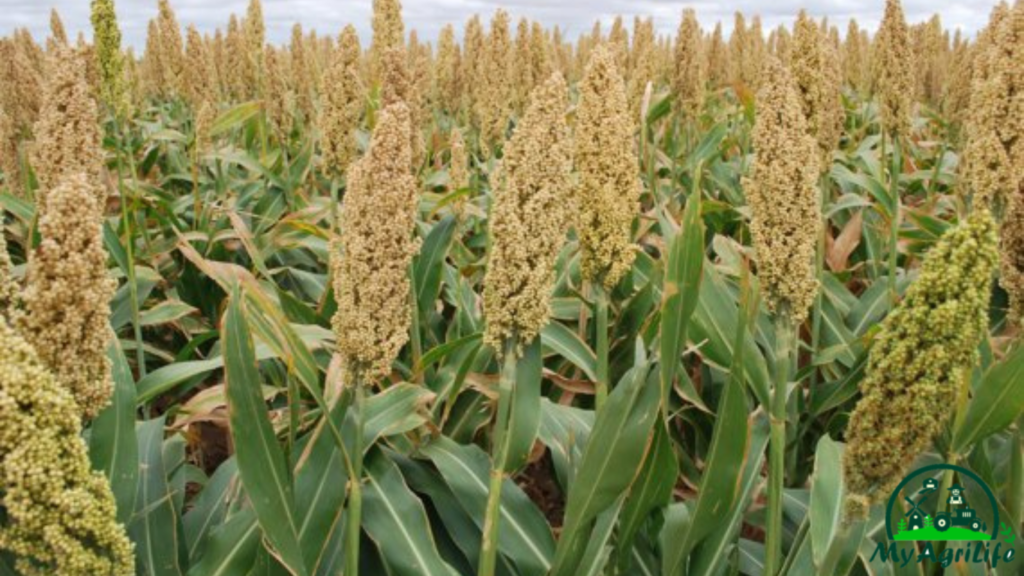
1.Sorghum grows best in well-drained soils with good water-holding capacity.
2.The ideal soil pH range for sorghum is 6.0-7.5, although it can tolerate slightly acidic soils.
3.Soil organic matter is important for soil health and fertility, so adding organic matter through cover crops or compost can help improve soil quality.
4.Sorghum requires adequate levels of nitrogen, phosphorus, and potassium for optimal growth and yield. Soil testing can help determine the appropriate amounts of fertilizer to apply.
5.Crop rotation is important for maintaining soil health and reducing disease and pest pressures. Sorghum should not be grown continuously on the same piece of land for more than two years in a row.
Conservation practices such as minimum tillage and cover cropping can help improve soil health and reduce erosion, which can benefit the sorghum crop.
Crop Spray & Fertilizer Specification Sorghum
Crop Spray for Sorghum
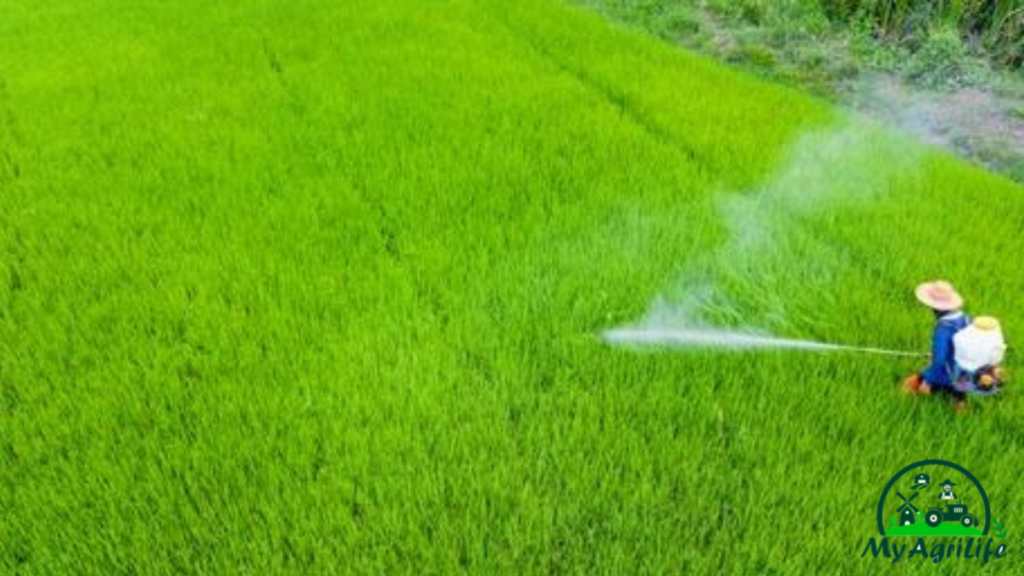
1.Pre-emergence herbicides can be used to control weeds before the sorghum seedlings emerge from the soil.
2.Post-emergence herbicides can be used to control weeds after the sorghum has emerged.
3.Insecticides may be needed to control pests such as aphids, armyworms, or corn earworms that can damage the sorghum crop.
4.Fungicides may be necessary to control fungal diseases such as anthracnose or rust.
5.Timing of the crop spray is important to ensure maximum effectiveness and minimal harm to the crop or the environment.
Fertilizer Specifications for Sorghum:
1.Nitrogen (N), phosphorus (P), and potassium (K) are the primary nutrients required by sorghum.
2.Soil testing can help determine the appropriate amounts of fertilizer to apply based on soil nutrient levels and crop needs.
3.For example, a common fertilizer recommendation for sorghum is 40-60 kg N/ha, 20-40 kg P2O5/ha, and 20-40 kg K2O/ha.
4.Fertilizers can be applied in one or more applications throughout the growing season, depending on the specific needs of the crop.
5.Foliar fertilizers can also be used to supplement soil-applied fertilizers and provide additional nutrients to the crop.
It is important to follow recommended fertilizer application rates and timing to avoid over-fertilization, which can harm the crop or the environment.
Weeding & Irrigation Sorghum
Weeding for Sorghum:
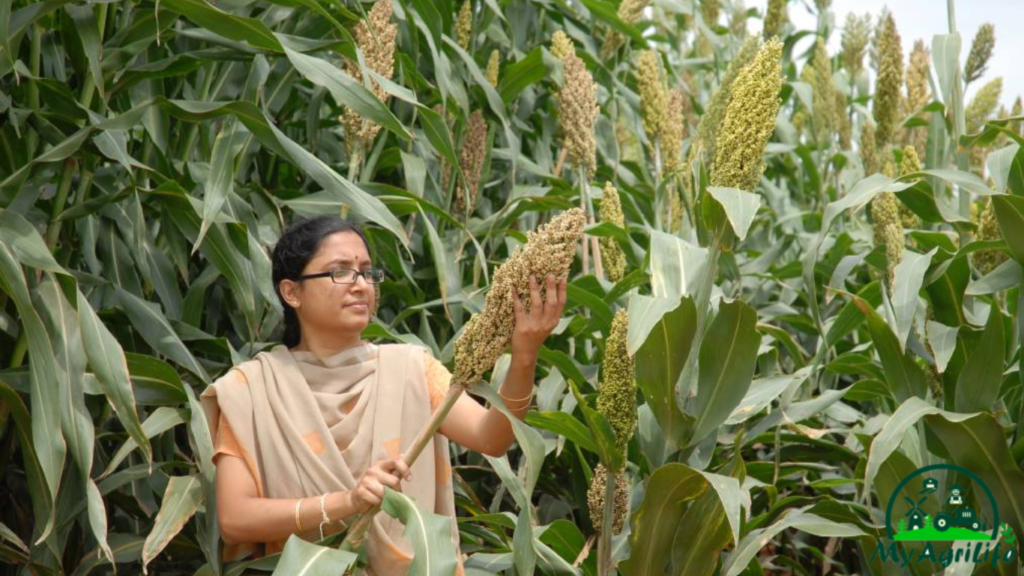
1.Weeding is important for sorghum to ensure good crop establishment, prevent competition with weeds for nutrients, and maximize yield potential.
2.Early weeding is recommended, as the sorghum crop is most vulnerable to weed competition during the first 4-6 weeks after planting.
3.Hand weeding or mechanical methods such as hoeing or cultivating can be used to remove weeds, although care should be taken not to damage the sorghum plants.
4.Herbicides may also be used to control weeds, although caution should be taken to avoid damage to the sorghum crop or the environment.
Regular monitoring of the sorghum field for weed infestations is recommended, and prompt action should be taken to prevent weed growth from getting out of control.
Irrigation for Sorghum:
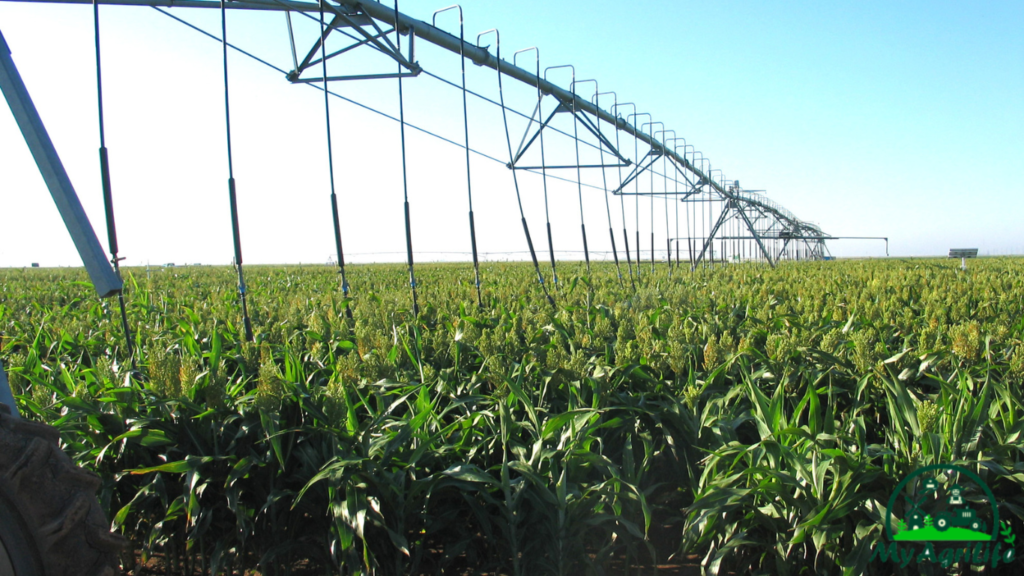
1.Sorghum requires adequate water to ensure good crop growth and yield potential.
2.The amount and frequency of irrigation needed will depend on factors such as soil type, climate, and crop growth stage.
3.Generally, sorghum should receive around 25-50 mm of water per week during the growing season, although this can vary depending on weather conditions.
4.Irrigation methods such as drip irrigation, furrow irrigation, or sprinkler irrigation can be used, depending on the availability of water and the specific needs of the crop.
Care should be taken to avoid over-irrigation, which can lead to waterlogging, soil compaction, or nutrient leaching. Regular monitoring of soil moisture levels can help determine when irrigation is needed.
Harvesting & Storage Sorghum
Harvesting Sorghum:
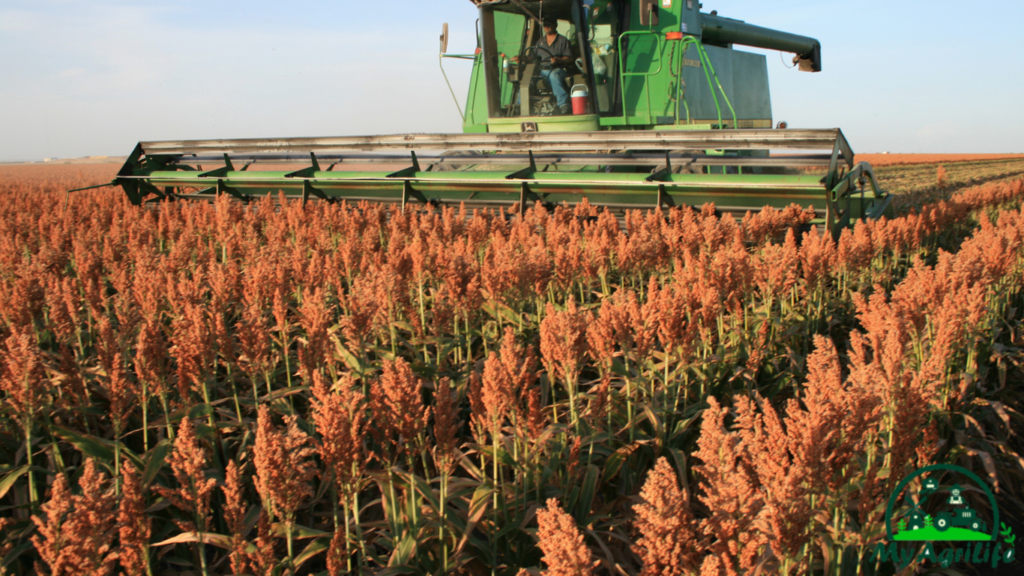
1.Sorghum is usually harvested when the grain reaches physiological maturity, which is indicated by a brown or yellow color of the spikelets.
2.Harvesting can be done using a combine harvester, which can thresh the grain and separate it from the plant material.
3.In areas where combine harvesters are not available, traditional methods such as hand harvesting or cutting with a sickle can be used.
4.Care should be taken to minimize grain losses during harvesting, as sorghum grains can shatter easily.
Harvesting should be done during dry weather conditions to prevent the sorghum grain from becoming damp and to facilitate storage.
Storage of Sorghum:
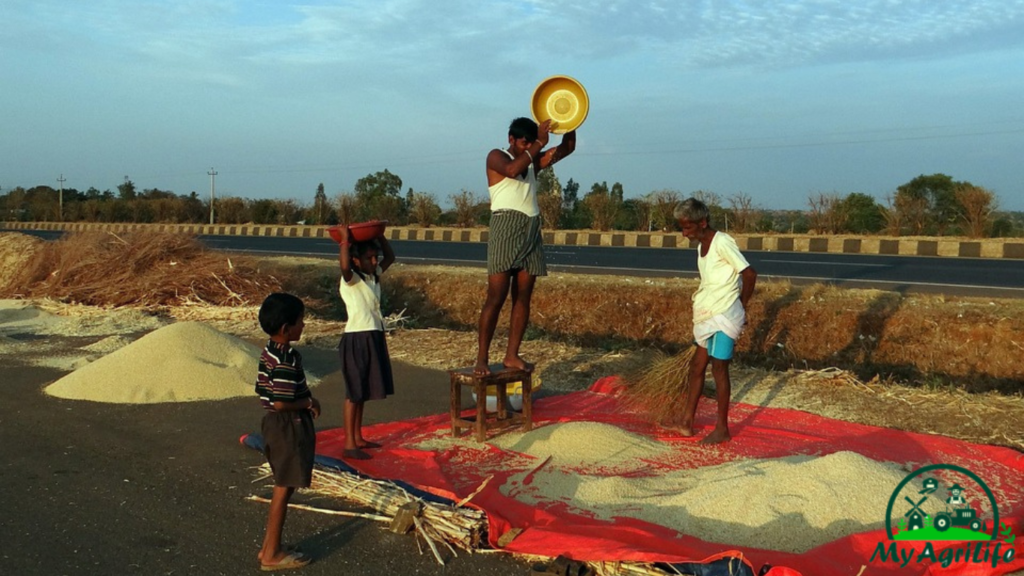
1.Sorghum grain should be stored in clean, dry, and well-ventilated storage facilities to prevent spoilage and insect infestations.
2.The ideal moisture content for stored sorghum grain is around 12%, although it can be stored at moisture contents up to 14% if properly aerated.
3.Sorghum grain should be cleaned of any foreign materials such as stones or debris before storage to prevent contamination.
4.Properly stored sorghum can be kept for up to one year or longer, although it should be regularly monitored for signs of spoilage or insect infestations.
In areas where storage facilities are not available, sorghum grain can be stored in airtight containers or bags, although care should be taken to ensure proper ventilation and moisture control.
Conclusion
In conclusion, sorghum farming can be a profitable and sustainable agricultural venture. Sorghum is a drought-tolerant crop that is adaptable to a variety of growing conditions, making it an ideal crop for farmers in regions with limited water availability or variable climate patterns. With proper land preparation, soil health management, crop spray and fertilization, irrigation, weeding, and harvesting and storage practices, sorghum farmers can achieve high yields and minimize crop losses. Additionally, sorghum is a valuable crop for both human consumption and livestock feed, providing multiple market opportunities for farmers. As a result, sorghum farming has the potential to improve food security, support rural livelihoods, and contribute to sustainable agricultural development.








